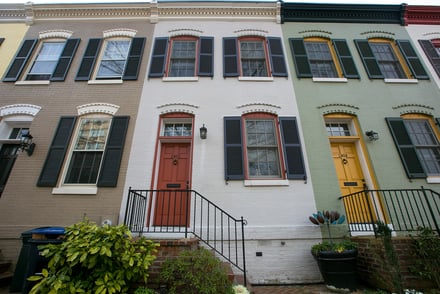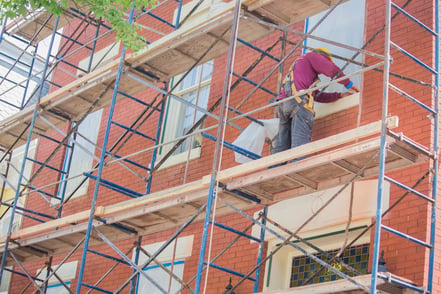If you are looking to remove stucco from brick and restore your home’s brick exterior, you may want to consider consulting an expert. A good rule of thumb is not to start removing wall or surface materials on your own unless you are prepared to deal with whatever you find underneath. By calling an expert, you can save yourself time, expense, inconvenience, and a final result that may be different than what you envisioned.
If you own or are purchasing a historic home, you might expect to be greeted by a traditional exterior, with its expertly fitted brick and artisan tuckpointing. But what if your home fits into the era where you would expect brick—one built in the 18th, 19th, or early 20th century—yet you are staring at stucco? Is it possible there is brick buried beneath a stucco façade?
Don't Start Chiseling Just Yet
If you are looking at removing stucco from brick and restoring your home’s original brick, you may be better off consulting an expert before you do. Removing the stucco is a serious undertaking, and it can take a single person or team significant hours of work to expose the brick.
Once the protective layer of stucco is off, the brick underneath could be in any condition, from workable to needing major repair. If the bricks are damaged or missing mortar, they will be vulnerable to water damage or pest infiltration. If your home was built before the 1930s, it is unlikely to have any additional supports other than bricks and mortar. When either is compromised, the load-bearing capabilities of your walls could be in jeopardy.
None of this means removing stucco from brick is a bad idea. Stucco was an increasingly popular design trend for many years after World War II. For those homeowners who applied stucco simply desiring a change in appearance, your bricks may be in acceptable condition. But not always — the bricks and mortar needed to shift with environmental changes, and the stucco may have prevented that. It is more likely there will be a great deal of tuckpointing to be done to save the brick and its structural integrity.
An even bigger problem will be a home where stucco was used to cover brick already needing tuckpointing. The already compromised brick was sealed in, yet continued to erode with time. In this instance, it is particularly important that you call for expert help.
Can I Try Removing Stucco from Brick?
You can remove stucco from brick by picking a small area to explore that can be easily repaired should you choose not to continue. However, it can be messy and comes with hazards like dust, sharp pieces, and airborne stucco chips flying around, so wear safety glasses and gloves. Gently tap your chosen area with a hammer until it breaks, and you can remove the loose pieces to inspect what you find underneath. Be careful during this process: you do not want to damage the brick. Remember that using tools such as crowbars and chisels can easily mar the bricks' surface.
It’s Best to Call the Specialists
If you encounter obvious deterioration when removing stucco from brick, such as crumbling, missing or cracked bricks, don't remove any more until you get a professional opinion. For example, if you discover you are missing substantial amounts of mortar, see large cracks or the bricks are pulling apart from each other, call an expert.
Another problematic situation is "chicken wire." When you pull the stucco from the brick, stop and call a specialist if the stucco is attached to wire mesh. Unfortunately, this likely means the mesh has been nailed to the brick, requiring significant work.
At Renaissance Development, our specialty is preserving heritage brick buildings, including removing stucco and restoring the brick with historically appropriate materials to ensure the integrity of your home. Contact us today for safe, efficient stucco removal and brick and mortar restoration.
2/3/22 8:00 AM

